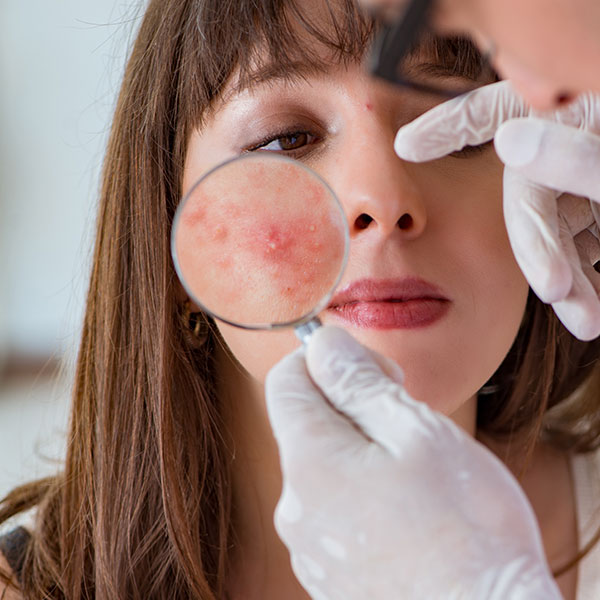Acne vulgaris, commonly known as acne, is a widespread skin condition that affects nearly everyone at some point. As the most prevalent skin issue in the United States, it impacts approximately 50 million Americans each year. This condition manifests as whiteheads, blackheads, and small red pimples, and in severe cases, can evolve into large, painful cystic lesions. Acne is particularly prevalent among teenagers, exacerbating not only physical symptoms but also psychological challenges due to their heightened sensitivity to social perceptions and self-image.

What is Acne?
Acne is a skin issue that many people, not just teenagers, deal with. It's the most common skin condition in the U.S., affecting up to 50 million Americans every year. Hormone changes, like those during puberty, the menstrual cycle, and menopause, can cause our skin to produce more oil. Some people's skin also grows new cells fast, and genetics can also play a part.
This extra oil and the fast-growing skin cells can block our pores. When a pore is blocked and closed, it looks like a white bump, known as a whitehead. If it's blocked but open, it turns black, called a blackhead. This blockage, combined with extra oil, is a perfect place for bacteria to grow. This bacteria can turn into red, painful pimples filled with pus. In severe cases, it can even cause big lumps under the skin that might leave scars, known as ice pick scarring.
Types of Acne
Whiteheads These are small bumps on the skin that form when pores get blocked by oil and dead skin cells. The pore is closed at the surface, which is why they appear white.
Blackheads These form when a pore is clogged by oil and dead skin cells but remains open at the skin's surface. The black appearance is due to the oxidation of the debris within the pore when it comes into contact with air; it's not because of dirt.
Papules These are small, raised, and often reddish bumps on the skin. They occur when oil, bacteria, and dead skin cells push deeper into the skin, causing inflammation.
Pustules These are similar to papules but are filled with pus. They appear red, raised bumps with a white center, sometimes leading to scarring.
Nodules In the context of acne, nodules are hard, painful lumps beneath the skin's surface. They are caused by the buildup of oil, bacteria, and dead skin cells deep within hair follicles.
Cysts Large, soft, pus-filled lumps are deeper under the skin. Cysts can be painful and often lead to scarring. They are the most severe acne lesions and might require medical treatment.
Hormonal Acne This type of acne primarily affects women and results from hormonal fluctuations that stimulate excess oil production, leading to breakouts.
Types of Acne Treatments
Impressions Face + Body provides a wide range of acne treatments, including collagen induction therapy with microneedling, epidermal peel, and non-ablative laser resurfacing treatment.
Topical
Salicylic acid is available in various strengths and formulations, including solutions, gels, lotions, and creams. Over-the-counter concentrations typically range from 0.5 to 2 percent. The product must maintain a pH level between 3 to 4 for optimal effectiveness. Unlike solutions or gels, lotions are often recommended as they hydrate without causing dryness or irritation. Creams might be too rich for those with acne-prone skin.
Oral
Those with severe acne may be candidates for Accutane, a powerful drug taken orally that stops acne in its tracks. It’s only taken for a short period of time, but the results can last for months or years.
Lasers
Fat Transfer
Radiance Peel
Beta Hydroxy Acids - Salicylic
Chicago's Trusted Acne Treatment Specialists
Struggling with persistent acne or scars? At Impressions Face + Body, we offer comprehensive solutions tailored to your unique needs. Our cutting-edge treatments are designed to give you clearer, smoother skin, from FDA-approved light therapies to transformative fat transfers. Discover how our expertise can rejuvenate your complexion. Book your consultation today and take the first step towards flawless skin.

